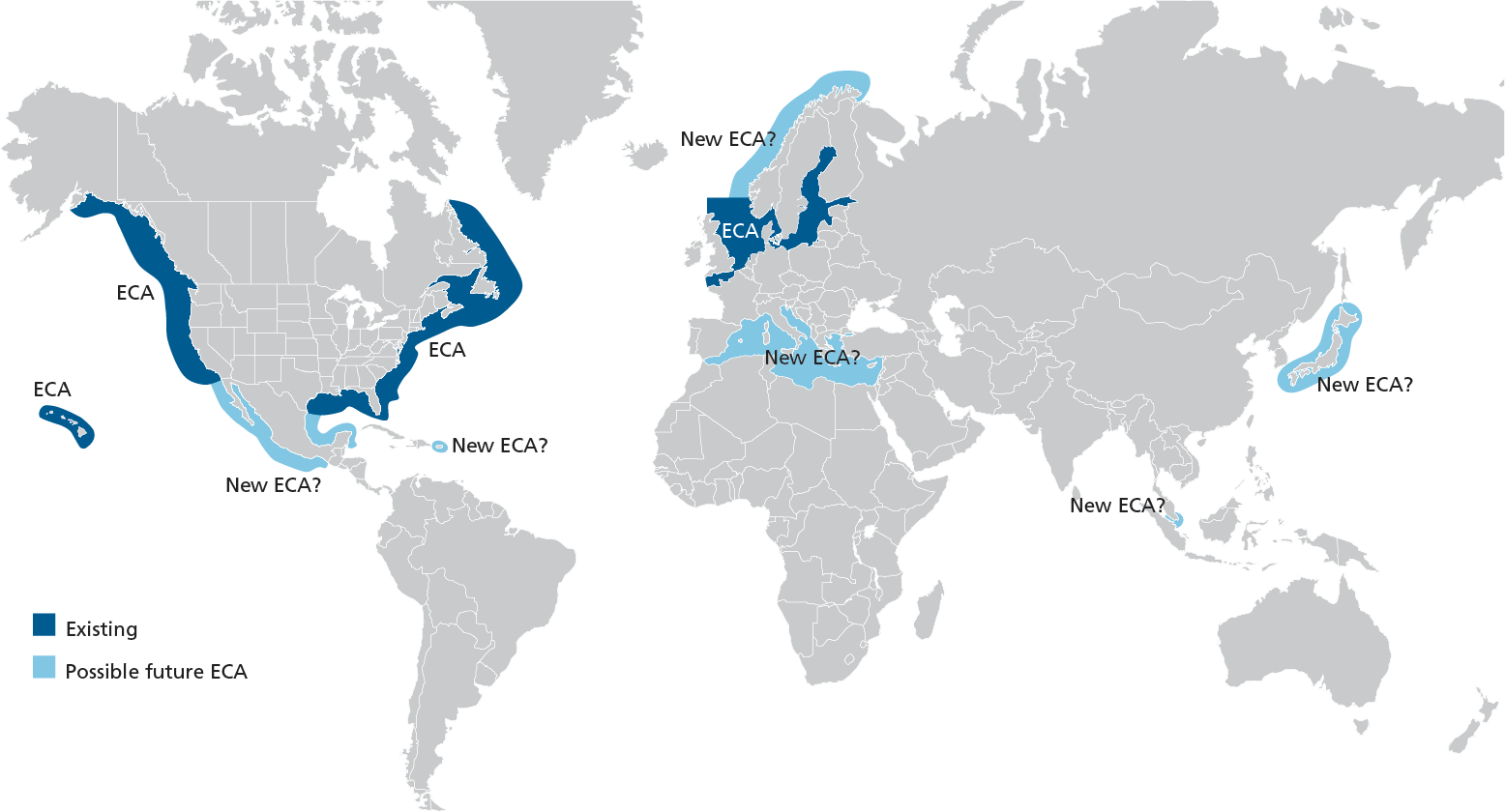
The world’s largest cruise company, Carnival Corporation, recently signed a memorandum of agreement with German and Finnish shipbuilders for three LNG fueled cruise ships. The ships are expected to be delivered in 2020, 2021, and 2022. This brings the total number of LNG fueled cruise ships on order by Carnival to seven. Additionally, Carnival’s first LNG powered cruise ships are estimated to start service in 2019 with its subsidiaries AIDA and Costa, both located in Europe.
Carnival’s first LNG-fueled cruise ships are planned to enter service in Europe: LNG is gaining the attention of fleet owners as a way to address stricter emissions regulations, particularly the establishment and expansion of Emission Control Areas (ECAs), which we have previously written about. We have also written on how drivers for LNG fueled marine vessels vary by region. ECAs are currently established in northern Europe and the coasts of the U.S. with possible expansions into the Mediterranean. Figure 1 shows a map of current ECAs and possible expansions.
LNG has significant drawback when compared to diesel and heavy fuel oil: While LNG offers benefits of significantly lower CO2 emissions than diesel or heavy fuel oil and zero sulfur emissions, it is not necessarily the best fuel for all applications for two main reasons. First, LNG is less energy dense than diesel or heavy fuel oil. Being less energy dense this means an LNG fueled ship with the same size fuel tank as a diesel ship can travel a much shorter distance. If an LNG ship designer wants to keep the same range as a diesel-fueled ship more space must be dedicated to fuel tanks, which takes away from cargo or passenger storage. Second, LNG bunkering infrastructure across the world is fairly limited. While there are efforts to expand the number of ports that bunker LNG, the infrastructure is significantly weaker.
Cruise ships are a good fit for LNG: While LNG may not be the best fit for all types of ships, it fits cruise ships well for three main reasons. First, most cruise ship journeys are relatively short as the ship will sail for a few number of days and then reach a port where the passengers can enjoy time on the land and the ship can refuel. This helps remedy the problem of lower fuel density. The second reason stems from something mentioned earlier. The first LNG fueled cruise ships are being delivered to Europe, where there is an ECA around nearly the entire continent. Cruise ships are likely to stay in an ECA for much of their journey and LNG addresses the stricter emissions regulations. Third, the first cruise ships being delivered to Europe, a continent that has the most ports capable of refueling LNG vessels. Today, the U.S. has one port with LNG bunkering capabilities while Europe has no less than 20, almost all located near the North and Baltic Seas.
LNG is poised to make an impact on the marine industry. ADI Analytics has conducted extensive research over alternative marine fuels including LNG in our study, Alternative Marine Fuels, and has additionally researched all natural gas monetization options as part of our Gas Monetization Advisory multi-client study.
-Tyler Wilson and Uday Turaga




















